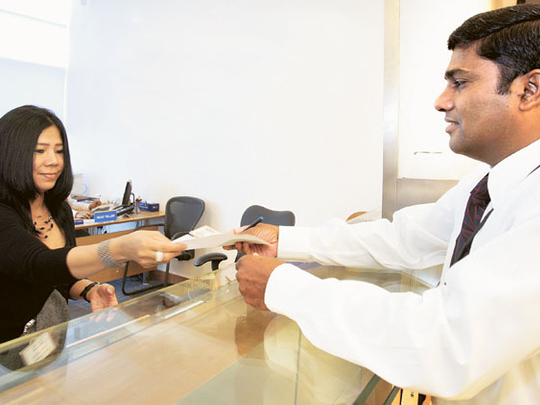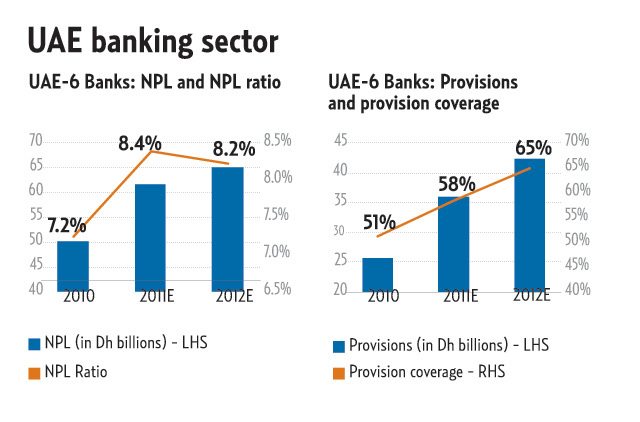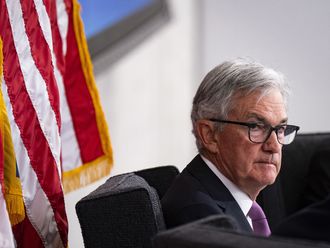
Dubai: Asset quality of leading UAE banks will remain under pressure compared to their regional peers during the current year and could linger on into next year, according to Mohammad Hawa, banking analyst with Credit Suisse.
"UAE banks are yet to experience the peak in their non-performing loans [NPLs] to 8.4 per cent, on our estimates for 2011 and will have to adjust to stricter regulatory measures mainly on consumer lending and fees," Hawa said in a report.
The NPL ratio for 6 leading UAE banks Credit Suisse covers stood at 7.2 per cent and the provision coverage stood at 51 per cent in 2010.
"Given the exposure to Dubai's GREs [government related entities] and a weak real estate market, we expect the NPL ratio for these banks to continue to rise to 8.4 per cent in 2011, while we forecast the provision coverage to increase to 58 per cent," he said.
Among the UAE banks under coverage, Credit Suisse analysts expect National Bank of Abu Dhabi (NBAD) to have the lowest NPL ratio at 3.2 per cent (NPL ratio for 2010 was 2.3 per cent) and the highest provision coverage of 115 per cent for 2011 (provision coverage for 2010 was 113 per cent).
"We expect ENBD [Emirates NBD] to have the highest NPL ratio at 13.8 per cent (NPL ratio was 10 per cent in 2010) and lowest provision coverage of 43 per cent in 2011 compared to 40.5 per cent in 2010," he said.
Last week, rating agency Moody's said NPLs of UAE banks were expected to peak above 10 per cent this year, up from 8.3 per cent in 2010 and 4.9 per cent in 2009. Moody's expects the upcoming $10 billion (Dh36 billion) debt restructuring by Dubai Holding to significantly contribute to this year's NPL levels.
High exposures
"Dubai-based banks typically have high exposures to Dubai government-related entities, and we consequently expect NPLs to peak in 2011 at around 6 per cent -8 per cent in Abu Dhabi and 11 per cent -14 per cent in Dubai," said Khalid Howladar, Vice-President and Senior Credit Officer at Moody's.
Credit Suisse expects the recent Central bank tightening of lending rules and fee structures to affect non-interest income growth in UAE.
"We expect the non-interest income of UAE banks to decline 3.8 per cent year on year in 2011 compared with growth of 4 per cent in 2010," said Hawa.
Among the six UAE banks under review Credit Suisse expects ENBD to post the highest non-interest income growth of 13.3 per cent in 2011.
Among the GCC banks, rating agencies and analysts believe that Saudi banks have perhaps the most unrealised potential in terms of profitability and asset growth.
Qatar and Saudi banks continue to exhibit high asset quality, with 2010 NPL ratios of 1.7 per cent for Qatar and 2.4 per cent for Saudi, while UAE banks which has 7.2 per cent NPL ratio last year continue to reel with exposure to some of the government related entities (GREs), according to Credit Suisse.
Supportive environment
"The profitability of Saudi banks stems from a unique combination of factors," said Standard & Poor's credit analyst Nicolas Hardy. "They operate in a supportive operating environment because of high oil prices and the backing of a cash-rich government."
Analysts do not expect significant changes in margins across the region, as the fall in the cost of funds in gthe UAE and Qatar is offset by GREs restructuring in the UAE and the capping of personal lending rates in Qatar.
"As the cost of funding in Saudi Arabia is low [0.4 per cent in the first quarter of 2011], we do not expect any further decline in costs while loan growth [consumer segment] should also help to stabilise margins at current levels," said Credit Suisse's Hawa.













